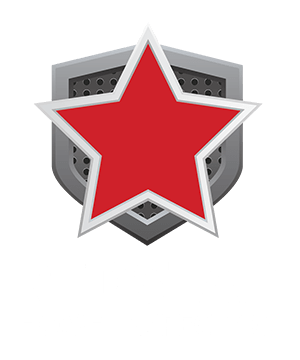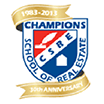Glossary – S
Safety Glazing: Tempered glass, laminated glass or rigid plastic.
Sash: Part of a window that holds the glass and is supported by the frame.
Saturant: Asphalt used to impregnate an organic felt base material.
Saturated Felt: Asphalt-impregnated felt used as an underlayment between the deck and the roofing material.
Sawtooth Roof: A roof consisting of a series of single-pitch roofs, usually found on factory buildings, garages or similar structures; allows abundant light and ventilation.
Sea Wall: Embankment to prevent erosion of flooding.
Scab: A piece of wood or metal which is fastened or attached to another member and serves to add additional length or width.
Score: To cut or scribe a fine line on a surface in order to facilitate cutting or to mark a cutting or location line.
Scouring: The erosion of sand and soil caused by wave action.
Screed: To bring a fill material flush with the surrounding surface.
Scuttle: A framed opening in a ceiling or roof that is fitted with a lid or cover.
Self-Sealing Strip or Spot: Factory-applied adhesive that bonds shingle courses together when exposed to the heat of the sun after application.
Self-Sealing Shingles: Shingles containing factory-applied strips or spots of self-sealing adhesive.
Self-Tapping Screw: Screw that cuts its own thread in metal when driven into a pilot hole.
Selvage: That portion of roll roofing overlapped by the succeeding course to obtain double coverage.
Semi-Circular Roof: A type of curved roof that is often used on farm houses.
Septic System: A private sewage system that usually consists of a septic tank, a distribution box, a septic field and connecting pipes and lateral.
Septic Tank: A tank in which sewage is held until the organic matter decomposes by natural bacterial action and most of the solid matter dissolves into liquids and gases that flow into the septic field.
Setscrew: Headless screw used to hold two metal parts together, such as a pulley on a shaft, a handle on some faucets of a socket on a light fixture.
Shading: Slight differences in shingle color that may occur as a result of normal manufacturing operations.
Shake: A hand-split shingle that is usually edge-grained.
Shearwall: A specially designed wall section which resists lateral forces resulting from wind loading of the structure.
Sheathing: Exterior grade plywood or tongue-and-groove boards used as a roof deck. The structural covering, usually wood boards or plywood, over a building’s exterior studs or rafters.
Sheave: A wheel with a grooved rim (pulley).
Shed Roof: A roof containing only one sloping plane. Has no hips, ridges, valleys or gables.
Shelter Tube: Mud-type tube (tunnel) built by termites as a passageway between the ground and the source of food (wood).
Shim: Small, thin piece of wood, cardboard, or metal; use these pieces to adjust level, plumb or alignment.
Shingles: A surfacing material used on roofs or walls and composed of thin, small sheets of waterproof material, e.g., asphalt, wood, slate, tile.
Shut Down: A piece of equipment of a system is shut down when it cannot be operated by the device or control, which a home owner should normally use to operate it. If a safety switch or circuit breaker is in the off position, or its fuse is missing or blown, the inspector is not required to re-establish the circuit for the purpose of operating the equipment or system.
Shut-Off Valve: Device that controls flow of water or gas to an individual fixture or appliance or to the entire system.
Side: A longitudinal wall of structure.
Side Jamb: A piece of finish material that is laid vertically on the interior sides of a floor or window to shape the opening.
Siding: The finished covering on the outside wall of a building or finish lumber used on exterior walls; e.g., bevel siding, boards and battens, shingles.
Sill: The lowest member of the frame of a structure, usually horizontal, resting on the foundation and supporting uprights of the frames. Also the lowest member of a window or outside door frame or the lowest piece on which a window or exterior door rests; usually slanted downward slightly to provide for rainwater runoff.
Sill Plate: The lowest member of the house framing resting on top of the foundation wall. Also called mud sill.
Single Coverage: Asphalt roofing that provides one layer of roofing material over the deck.
Single Pitch Roof: A single-plane roof with a pitch of more than 20 degrees.
Skylight: Window located in a ceiling/roof.
Slab Floor: Floor constructed on grade; normally concrete.
Slide: A sloped piece of metal or wood permanently attached to the side of a swimming pool from which people may project into the water.
Sludge: Slimy matter precipitated from sewage in sedimentation tank.
Slope: The degree of roof incline expressed as the ratio of the rise in inches, to the run, in feet.
Small Building: A one or two story building having a plan dimension of 60′ x 60′ or less, or a three story building having a plan dimension of 40′ x 50′ or less.
Smooth Surfaced Roofing: Roll roofing that is covered with ground talc or mica instead of granules.
Soffit: The visible underside of a roof overhang or eave.
Soil Stack: Large drain-waste and vent pipe that connects toilet and branch drains to main house drain and extends out of the roof.
Sole Plate: The lowest horizontal member on wall and partition framing (see sill).
Solid Fuel Heating Device: Any wood, coal, or other similar organic fuel burning device, including but not limited to fireplaces whether masonry or factory built, fireplace inserts and stoves, wood stoves (room heaters), central furnaces and combinations of these devices.
SPA: A whirlpool bath used privately in a residence.
Span: The horizontal distance from eaves to eaves.
Splice: To join wires by twisting and soldering or with solderless connectors.
Split-Level House: A house with living areas on two or more levels of less than single-story height.
Square: A unit of roof measure covering 100 square feet.
Square-Tab Shingles: Shingles on which tabs are all the same size and exposure.
Stack: A vertical waste or vent pipe.
Stair Landing: A platform between flights of stairs.
Stairs: A flight of steps from one level or floor to another.
Stairway: The flights of stairs and landings in a building that form a continuous passage from one floor to another.
Standard Full Inspection: A comprehensive inspection of all systems of the property including heating, roof, structural, plumbing, electrical, mechanical, windows, doors, floors, walls, ceiling, etc.
Starter Strip: Asphalt roofing applied at the eaves that provides protection by filling in the spaces under the cut-outs and joints of the first course of shingles.
Start of Construction: The first placement of a permanent construction of a structure on a site, such as pouring slabs or footings or any other work beyond the stage of excavation.
Steep Slope Application: Method of installing asphalt shingles on roof slopes greater than 21 inches per foot.
Step Flashing: Flashing application method used where a vertical surface meets a sloping roof plane.
Stile: A structural member of a parallel or glazed door. An exterior or perimeter member of a window, other than the meeting, check, rail in a double-hung window.
Stool: The wooden base or support at the bottom of a window; e.g., the shelf-like interior piece that extends across the bottom of a window opening.
Story: A horizontal division of a building; the portion between one floor and the floor above or below it.
Stringer: A long horizontal timber which is used to connect uprights in a frame and/or to support a floor.
Stringer (Step): One of the enclosed sides of a stair supporting the treads and risers.
Strip Shingles: Asphalt shingles that are approximately three times as long as they are wide.
Strongback: An L-shaped wooden support attached to tops of ceiling joists to strengthen them, maintain spacing, and bring them to the same level.
Structural Component: A component which supports non-variable forces or weights (dead loads) and variable forces or weights (live loads).
Structural Inspection: A special inspection of load bearing members in a building.
Strut: A piece of wood fixed between two other pieces or members, designed to receive pressure or weight along its length.
Stucco: A cement plaster that is used as a finish for exterior wall surfaces, usually applied over a metal or wood lath base.
Studs: Vertical pieces of lumber usually spaced on 16 or 24-inch centers and attached to top and sole plates, forming the structural core of interior and exterior walls of a house
Subfloor: Boards, planks or plywood nailed to floor joists to provide structural rigidity and a base for finish flooring.
Sump Pump: An automatic electric pump installed in a basement or other low area to empty the sump, a pit serving as a drain.
Suspended Ceiling: A ceiling system that is supported by overhead, structural framing.
Swale: A shallow depression in the ground to form a channel for storm water drainage.
Sweat water: Fresh water.
Swimming Pool: A man made structure, either in-ground or above ground which holds water in which a person may swim.
Swimming Pool Cleaning Equipment: Equipment necessary to maintain a swimming pool.
Swimming Pool Pump: A pump which circulates the water in a swimming pool.
System: A combination of interacting or interdependent components, assembled to carry out one or more functions.






